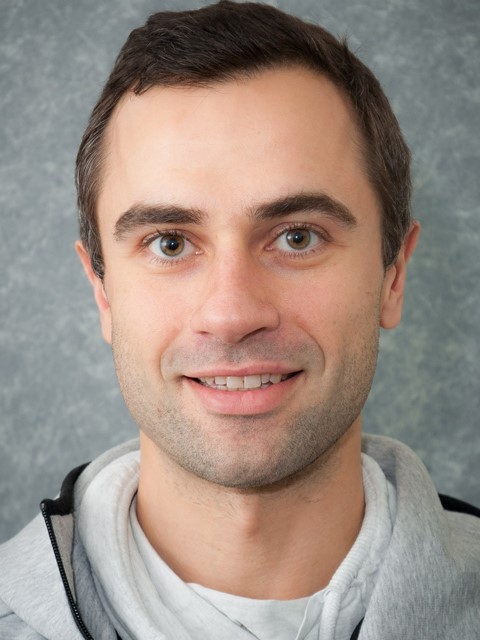Permanent silencing of latent HIV using CRISPRi with engineered transcriptional repressors

Abstract
The presence of functional latent HIV proviruses integrated within a small, but diverse, fraction of resting memory CD4+ T cells is currently thwarting a cure for HIV-infected individuals. The toxicity of antiretroviral therapy (ART), the increasing economic burden of supporting lifelong ART to a growing number of infected individuals in resource-limited countries, and the steady emergence of drug resistance all underscore the need for a safe and scalable strategy to achieve sustained HIV remissions in the absence of ART. How best to achieve this goal? Approximately 44% of the human genome corresponds to mobile genetic elements [1], almost all of which have been silenced at the transcriptional level. We seek to learn from the molecular strategies that have evolved to permanently inactivate these endogenous retroelements (primarily histone and DNA methylation) and to utilize these same strategies to achieve durable transcriptional silencing of those exogenously-introduced HIV proviruses that comprise the latent HIV reservoir. Recently, I have adapted the CRISPR interference (CRISPRi) technology to suppress the activity of the HIV LTR in latently infected cells. I first established CRISPRi in J-Lat 5A8 cells, a 3rd generation HIV latency cell line model that exhibits many biological properties found in CD4 T cells from HIV-infected patients on ART [2, 3]. CRISPRi employs a single guide RNA (sgRNA) to direct a catalytically inactive Cas9 protein (dCas9), fused with potent transcriptional repressor proteins to a specific DNA target. Using this system, I achieved an almost complete knockdown of the LTR-directed gene expression that was highly resistant to the virus-activating effects of potent mitogens and latency reversing agents. Although highly efficient, this silencing proved transient and disappeared as the sgRNA and dCas9 were degraded in cells. The challenge is how to make this potent repression of HIV proviruses more durable. Here, through an exciting collaboration with Dr. Angelo Lombardo (Milan), I propose to utilize a novel class of dCas9 fusion proteins, containing a cadre of engineered transcriptional repressors (CRISPRi-ETRs) that can produce long term silencing of various somatic genes like beta-2 microglobulin through the induction of trimethylation at H3K9 and DNA methylation[4]. These are the precise modifications that contribute to silencing endogenous retroelements. My objective in this proof-of-concept study is to explore CRISPRi-ETR as a novel approach to achieve a potent and durable “block and lock” or transcriptional silencing of integrated HIV proviruses. My centralhypothesis is that a permanent and sequence-specific transcriptional suppression of latent HIV can be achieved with a single, transient administration of CRISPRi-ETR. My rationale is that this method will introduce a transcriptional block that mirrors mechanism used in mammalian cells to silence endogenous retroelements including retroviruses. First, I will test CRISPRi-ETRs in J-Lat 5A8 cells using the highly efficient sgRNAs that I identified in my previous CRISPRi screen. HIV gene expression in the presence and absence of strong latency reversing agents will be monitored over extended time periods and epigenetic modification of surrounding histones and proviral DNA will be assessed by chromatin immuno precipitation and metabisulfite DNA sequencing. I will also assess whether undesired off-target gene silencing is occurring in these cells using RNA-seq, monitoring changes throughout the transcriptome. Assuming promising results are obtained in the cell line system, I will move the CRISPRi-ETR into a primary CD4 T cell model of latency that has been developed in the Greene lab[5]. CD4 T cells, extracted from PBMCs or tonsils will be infected with a dualreporter virus, enabling precise flow-based identification of cells with transcriptionally silenced proviruses versus active viral replication [6]. Because CD4 T cells exist within more than 20 different subsets, I propose to use flow-based sorting to isolate the latently infected CD4 T cells infected with the dual reporter virus and then to analyze these latently infected cells at the single cell level. In an exciting collaboration with Dr. Jay Shendure (Fred Hutchinson Cancer Research Center), I will use combinatorial indexing to simultaneously determine the RNA transcriptome (scRNA-seq) and state of chromatin accessibility (ATAC-Seq) within the same cell in the presence or absence of various latency reversing agents and with and without CRISPRi-ETR silencing. I am eager to learn whether different subsets of cells respond differently to these latency reversing agents and whether the effectiveness of transcriptional silencing varies within different CD4 T cells subsets.z
Aim 1. To induce and characterize long term transcriptional silencing of latent HIV provirus in J-Lat 5A8 cells using CRISPRi-ETR. Hypothesis: CRISPRi-ETR can be used to recruit different transcriptional repressor complexes to the HIV-1 LTR, promoting permanent, sequence-specific silencing of integrated HIV proviruses with little or no off-target toxicity.
Aim 2. To assess latency reversal and effectiveness of CRISPRi-ETR in different subsets of human CD4 T lymphocytes using single cell RNA-seq and ATAC-seq. Hypothesis: Responsiveness of different CD4 T cell subsets to latency reversing agents will differ but like retroelement repression, CRISPRi-ETRmediated silencing will be effective in all of these CD4 T cell subsets.
I have established collaborations with Drs. Angelo Lombardo (Milan) and Dr. Jay Shendure (Seattle). My ability to collaborate with these scientists will allow me to reach a truly new level of scientific expertise. I will also learn how to manage and analyze large data sets generated in the RNA-seq and scRNA/scATAC-seq studies through collaboration with Dr. Katie Pollard, Director of the new Gladstone Institute for Data Science and Biotechnology and Dr. Eva Wang, Director of the Gladstone Bioinformatics Core. In many ways, I believe, if awarded, this proposed CFAR supplement will pivotally propel both the breadth of my scientific training and my goal of becoming an independent academic investigator.